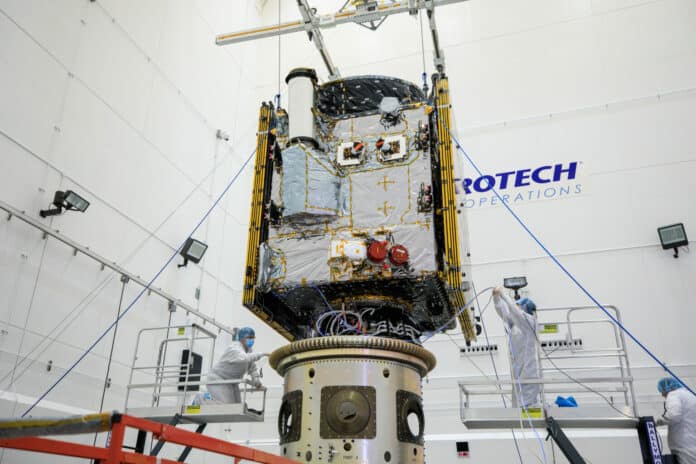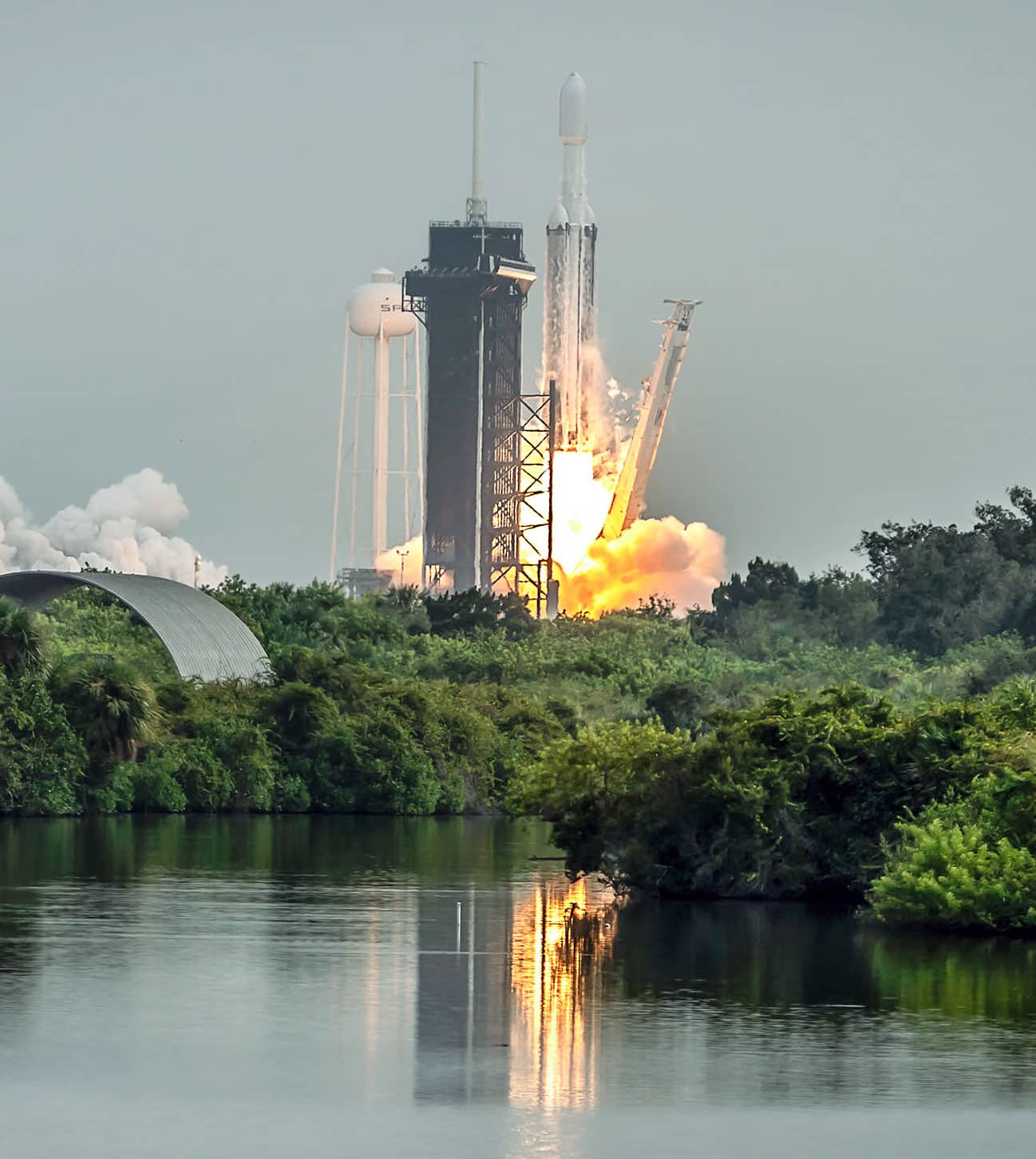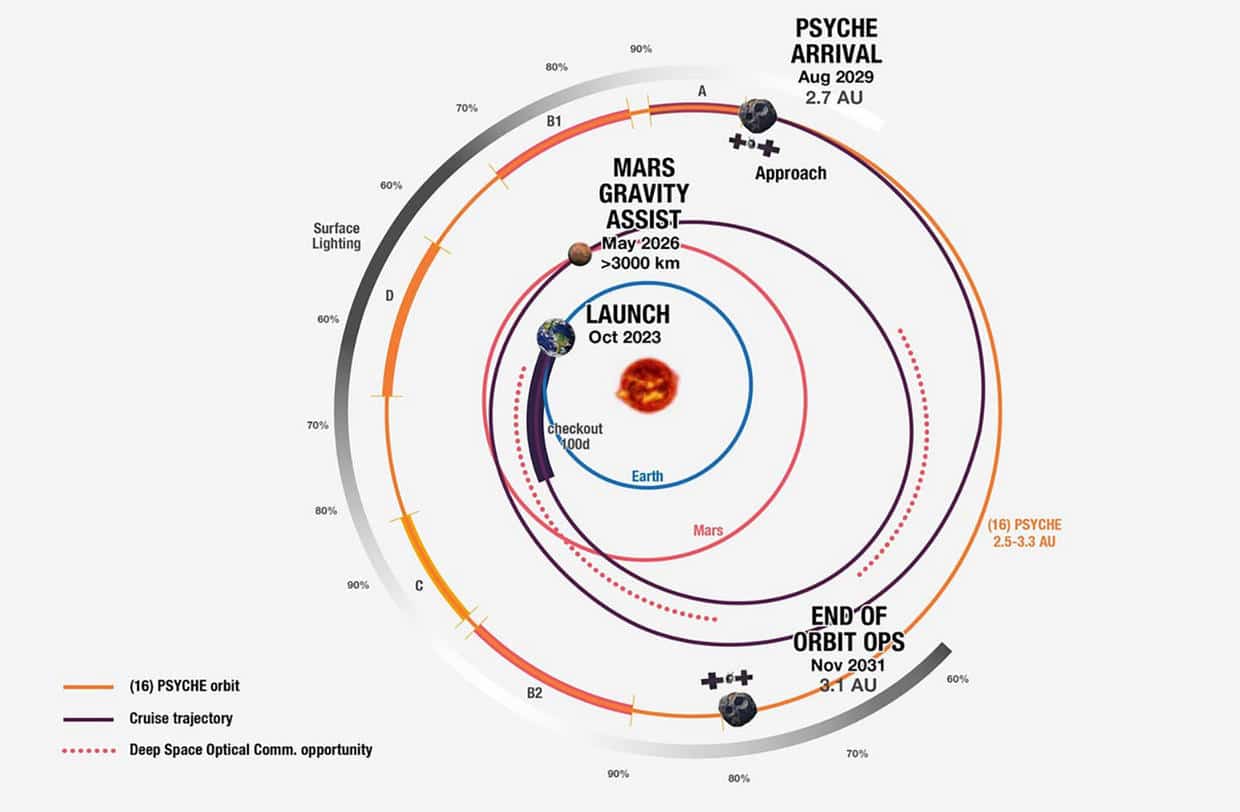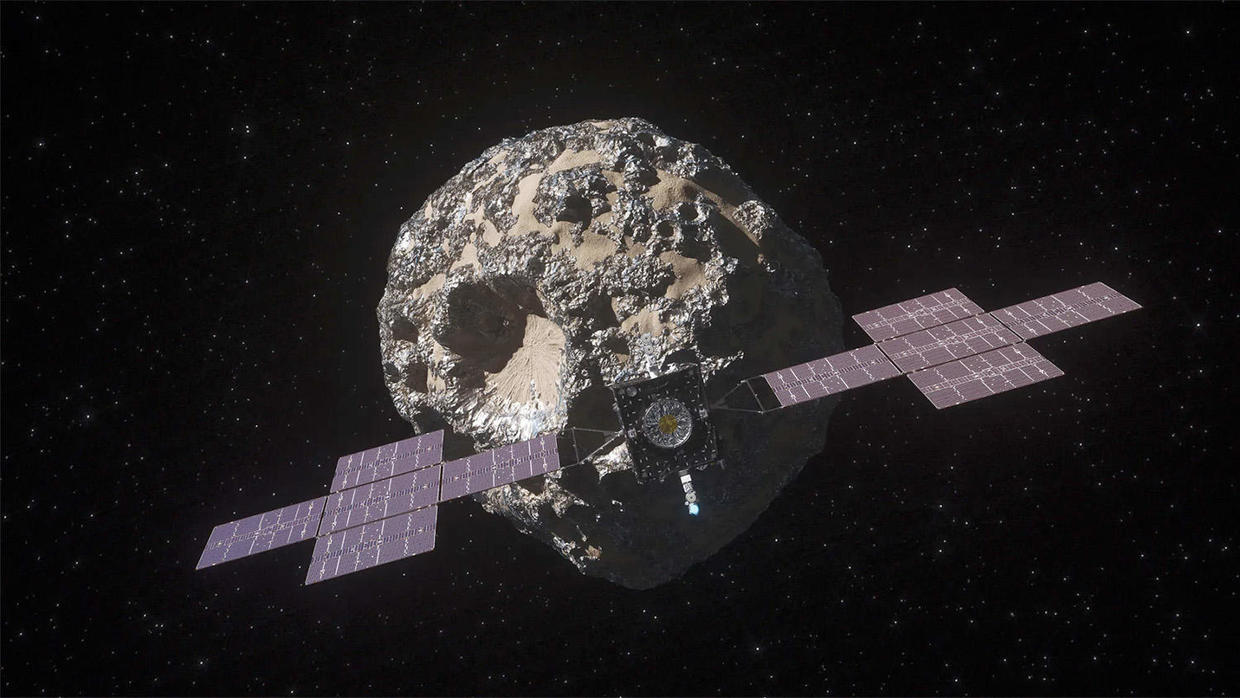NASA’s Psyche spacecraft began a 2.25 billion mile journey on October 13th, with a 10:16 AM liftoff from the Kennedy Space Center’s Launch Complex 39A. The mission will see the Psyche eventually enter an orbit around the asteroid known as 16 Psyche to begin a 26-month study of the asteroid’s composition. Psyche is the largest known asteroid to be primarily composed of metals.
The mission has drawn considerable excitement from Arizona State University researchers who planned the mission, as well as NASA and other space scientists. Arizona State University first proposed the mission concept to NASA because of the asteroid’s unique makeup of metals. Scientists believe the asteroid was once a “planetary core,” similar to the Earth’s core and that of other “rocky planets.”
Because there is no way to actually reach the Earth’s core or that of any other planet, there has never been a first-hand study of its composition. The hope is that the Psyche mission will give new insights into our planet’s own origins and composition. “We’re going to learn about a previously unstudied ingredient that went into making our habitable Earth, and that is the metal that is now in the Earth’s core and the cores of all of the rocky planets, cores that we can never visit but of course that we want to learn about. Psyche is the single largest metallic object in our solar system. So if we want to learn about our cores, that’s where we need to go.” said principal investigator Lindy Elkins-Tanton.
There are two leading theories about how Psyche formed. “One is that it’s a core of a body, analogous to like what is inside the Earth, with a molten metallic center,” said Ben Weiss, Psyche deputy principal investigator at MIT. “But in this case, Psyche had its outer layers stripped off by asteroid impacts in the early solar system, so we can see (the exposed core) today. The other idea is that Psyche is a kind of primordial, unmelted body, basically formed from the very first materials in the solar system, that has been preserved in this primordial state ever since.”
The Asteroid 16 Psyche orbits our sun in the asteroid belt between Mars and Jupiter, three times further from the sun than Earth. Because of the sheer distance to reach the 173 x 140-mile wide asteroid, the Psyche probe will have to travel nearly six years to get there. The flight time includes a three to four-month testing and checkout period before the spacecraft does a “slingshot flyby” of Mars to gain additional speed and change course courtesy of Mars’s gravity.
Engineers will put a secondary payload through its paces along the way to Mars: the Deep Space Optical Communications, or DSOC, experiment. An infrared laser and telescope assembly attached to the side of the Psyche spacecraft will attempt to send data back to Earth at vastly higher rates than possible with traditional radio signals.
The spacecraft will use solar electric propulsion, electrically accelerating ionized xenon atoms in any one of four Hall-effect thrusters to produce a gentle but constant push. “ You can think of this as getting thrust from sunlight,” said David Oh, Psyche’s chief engineer for operations at JPL. “It’s the ultimate in green propulsion for our spacecraft.”
Arrival at the “metal planet” is slated for sometime in August 2029. Once there, the probe will not land but rather orbit the asteroid for twenty-six months, studying it with a variety of scientific instruments. The mission will end in November 2031, when the probe is expected to reach the end of its useful life.
On a side note, the question of the value of the metal in 16 Psyche was raised by interested observers. Some estimates range the value as high as $10 quintillion dollars. “We have zero technology to bring Psyche back to Earth. And if we did, it would likely be a catastrophic mistake. It would flood the metals market, and it would literally be worth nothing. And so calculating the value of it is a fun intellectual exercise with no truth to it,” Elkins-Tanton said.






